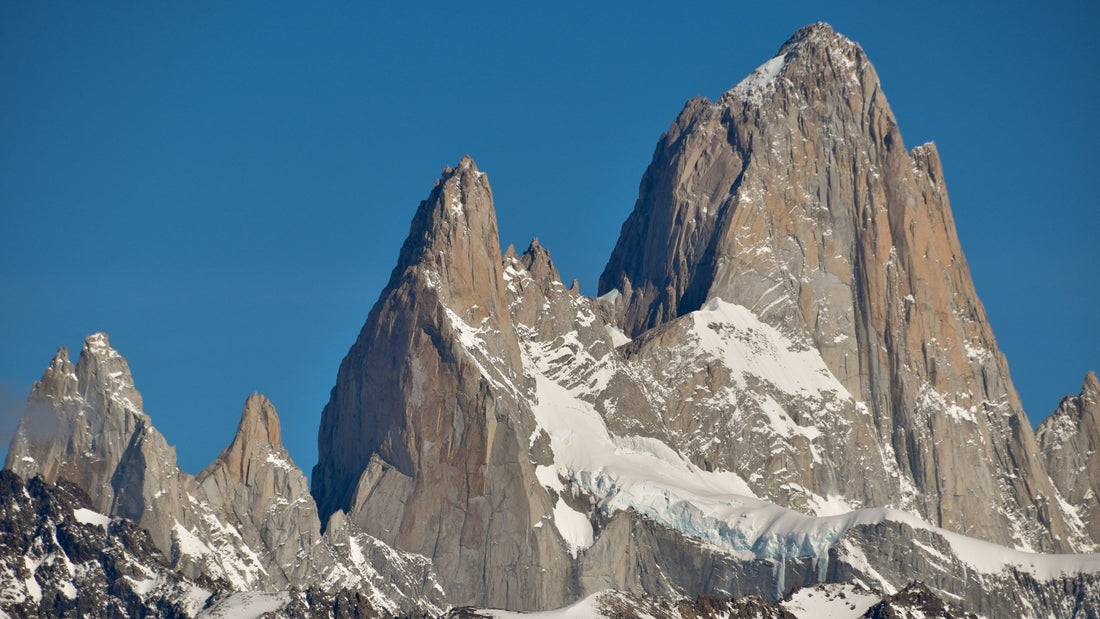
Where to climb in January
Share
The first month of the new calendar year, January can be full of good intentions and grand plans but the month itself has a lot going for it if you know where to go. (Hint: head south).
Here are our suggestions for where the best mountaineering can be found this month, but as always, you’ll need to check up to date information regarding access and logistics, particularly for those areas subject to geo-political tensions (and volcanic activity!). Here’s a little inspiration for the month of January. And if not this year, why not next?
South America
In Columbia you can enjoy climbs that start in the jungle and take you up to around 5000m on snow and ice covered volcanoes such as Nevada Santa Isabel and Tolima. There are also alpine peaks of similar height in Venuzuela in the Sierra Nevada.
The volcanoes of Ecuador (e.g. Cayambe, Chimborazo and Cotopaxi) offer moderately technical routes over 5000m that are climbable during many months of the year, including January. Interestingly, if you stand on the 6310m summit of Chimborazo you’ll actually be at the furthest point from the centre of the earth, due to the fact it is not a perfect sphere and bulges out at the equator. Take that, Everest!
The Puna de Atacama area in Argentina has the highest concentration of peaks over 6000m in the whole of the Andes, but its remoteness has left it relatively under explored. The peaks are largely volcanic, so aren’t technically very difficult – there are even Inca ruins on the summits of some including Nevado de Chañi (5930m). There’s probably even some first ascents still to be made in the region.
Then of course there’s Aconcagua; the highest peak in South America, and therefore one of the Seven Summits. While the normal route doesn’t involve any technical terrain, at 6962m the effect of altitude, and the mountain’s reputation for being extremely cold and windy makes this a serious undertaking. There are more interesting ways up such as the Polish Glacier or Traverse routes which have more technical snow and ice to navigate.
Further south the Andean Lake District and Maule regions span the Argentina/Chile border with an abundance of forests and (you guessed it) lakes surrounding a mixture of volcanic and snow-capped peaks, which are generally easy and done-in-a-day ascents of between 3000 and 4500m.
Even further south, Chilean Patagonia holds some relatively unexplored mountains and glaciers, as well as some of the most iconic and well known. The granite towers of Fitzroy and Cerro Torre in the Chalten Massif have world class routes involving rock, snow, mixed and ice climbing plus the dubious accolade of the world’s worst weather, all of which are serious undertakings.

The Cerro Torre group beyond the Torre Glacier. Photo: Maria Parkes
There are many more mountaineering options requiring less advanced climbing skills and commitment, including Cerro Solo (2221m) and Vespignani (2146m) which are accessed from El Chalten and have superb views of the nearby towers and the southern ice cap. Or if you want something with a more expeditionary feel, but not too technical then the highest point on the Northern Ice Cap is San Valentin (4085m), where your biggest challenge is likely to be the infamous Patagonian wind.
Antarctica
If you’re after something even more adventurous and remote, then South Georgia and Antarctica have got to be on your list (but start saving now, because getting there is not cheap!). South Georgia is steeped in polar history and teeming with wildlife if that’s your thing. Exploring this remote mountainous island on foot or by ski is bound to be a memorable experience.
The Antarctic peninsula is much milder than the rest of the continent, so is also a viable location for mountaineering and skiing in January. In both cases, it helps if you’re comfortable on a boat as these are used to access different locations on the coast and surrounding islands, and are much more cost effective (and environmentally friendly) than flying into the region.
Then of course there’s Antarctica itself. While there’s hundreds of thousands of square miles of unexplored wilderness, the logistical support is (unsurprisingly) limited to certain key areas and routes. Union Glacier camp serves as the jumping off point for most expeditions in Antarctica including climbing Mount Vinson (the highest on the continent and therefore one of the Seven Summits). January is also a key month in the season for ski traverses to the pole and beyond (whilst not ‘technically’ mountaineering, there’s certainly some crossover). And if you thought that was the preserve of bearded men only, then you’d be wrong – there have been a number of notable female-only crossings made by the likes of Felicity Aston, Ann Bancroft and Preet Chandri to mention just a few.
New Zealand
When it comes to the Southern Alps, the name only tells you half the story. Running down the spine of New Zealand’s South Island, this mountain chain is alpine in scale but significantly more remote and adventurous than it’s European counterpart. As the approaches can take several days and the weather windows can be short, it's not uncommon to make use of helicopters to access the network of alpine huts used as bases for the climbs. Most alpine climbing is done during the summer season, which runs from November to February, although some summits are climbable all year round especially if you’re competent on skis.

Mount Tasman at dawn from the summit slopes of Aoraki (Mount Cook). Photo: Maria Parkes.
While the highest summit of Aoraki (Mount Cook) is only 3724m, it’s the complexity of the approaches, terrain and variable weather that makes many of these mountain summits somewhat elusive, and therefore all the more special if you’re successful. The area around Mount Aspiring has a wide variety of routes on snow which are a good introduction to alpine mountaineering NZ style.
North America
In January the best mountaineering in North America is actually found in Mexico (yes, technically Mexico is in North America!) which is in dry season. Often overlooked, Mexico has a range of impressive volcanic summits including Pico de Orizaba which is the highest volcano in North America at 5636m.
You’ve probably heard of the second highest volcano (Popocatepetl) which is currently quite active and therefore not recommended – better to admire the view of it from Iztaccíhuat (5286m) instead. The name Iztaccíhuat translates as ‘white woman’ because the profile of the snow covered mountain apparently looks like a woman lying down. We’re not convinced, but maybe it’s a matter of perspective!
Africa
January is one of the many months of the year where Kilimanjaro can be climbed in Tanzania. For something a little more off the tourist track, Uganda’s Rwenzori mountains are also in season at this time of year, with Mount Stanley at 5109m an often-overlooked glaciated peak. There are also some adventurous alpine rock routes on Mount Kenya’s South face that can be climbed in January.
So there you have it, there’s plenty of mountain adventures to be had around the world in January – particularly if you can go south for the winter!
